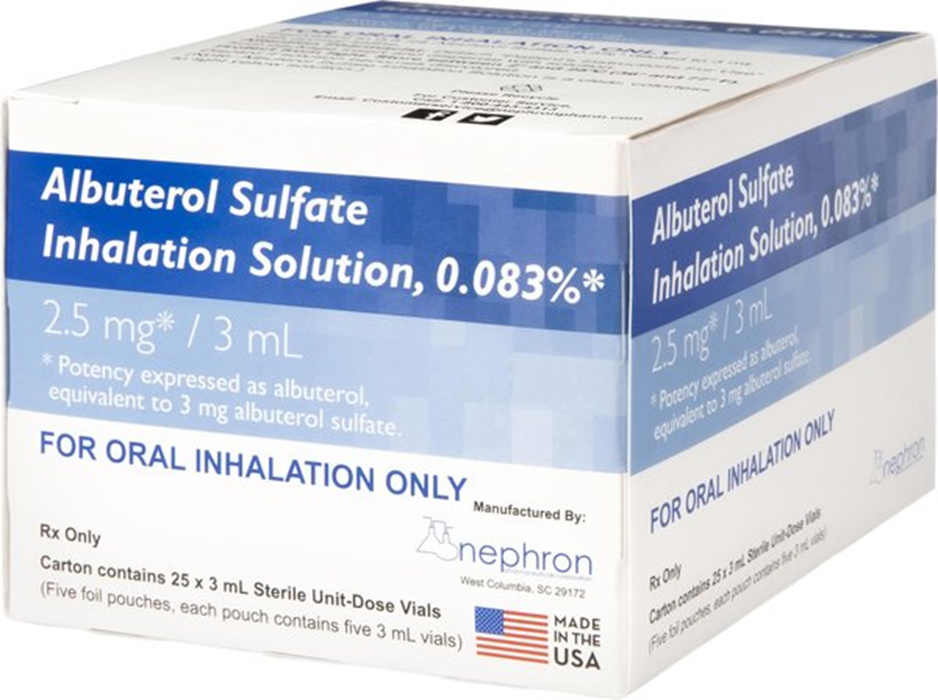A nurse is caring for an 18-month-old toddler in the emergency department. The nurse reviews the toddler's medical record and assessment findings. Which of the following provider prescriptions should the nurse anticipate?
acetaminophen suppository.
oral rehydration solution.
nebulized albuterol.
intravenous antibiotics.
The Correct Answer is C
Choice A reason: Acetaminophen suppository is not a likely prescription, as it is used to reduce fever and pain, which are not the main problems of the toddler. The toddler has a high axillary temperature of 39.5°C (103.1°F), which is not considered a fever in children under 2 years old. The normal axillary temperature range for children is 36.5°C to 37.5°C (97.7°F to 99.5°F).
Choice B reason: Oral rehydration solution is not a probable prescription, as it is used to prevent or treat dehydration caused by diarrhea, vomiting, or excessive sweating, which are not the main problems of the toddler. The toddler has a normal respiratory rate of 22/min and oxygen saturation of 98%, which indicate adequate hydration and oxygenation.
Choice C reason: Nebulized albuterol is a possible prescription, as it is used to treat bronchospasm, which is a common complication of respiratory infections in children. The toddler has a high apical heart rate of 142/min, which may indicate respiratory distress or hypoxia. The toddler is also pulling at his ear, which may indicate an ear infection or pain.

Choice D reason: Intravenous antibiotics are not a likely prescription, as they are used to treat bacterial infections, which are not the main problems of the toddler. The toddler has no signs or symptoms of a bacterial infection, such as purulent discharge, foul odor, or localized inflammation. The toddler may have a viral infection, which does not respond to antibiotics.
Nursing Test Bank
Naxlex Comprehensive Predictor Exams
Related Questions
Correct Answer is C
Explanation
Choice A reason: Administering alprazolam 0.5 mg PO is not the first action that the nurse should take. Alprazolam is a benzodiazepine that can be used to treat anxiety or insomnia, but it is not a priority intervention for a mother who has experienced a stillbirth. The nurse should assess the mother's emotional and physical needs before giving any medication.
Choice B reason: Contacting the health care facility's clergy is not the first action that the nurse should take. The nurse should respect the mother's spiritual and cultural beliefs and preferences, but not assume that she wants or needs the clergy's presence. The nurse should ask the mother if she would like to have any spiritual support or counseling.
Choice C reason: Offering the mother private time with the newborn is the first action that the nurse should take. This is a sensitive and compassionate way to acknowledge the mother's loss and grief, and to facilitate bonding and closure. The nurse should provide the mother with a quiet and comfortable environment, and allow her to hold, touch, and talk to the newborn as long as she wishes.
Choice D reason: Assisting the client with transferring to the gynecology unit is not the first action that the nurse should take. The nurse should not rush the mother to leave the labor and delivery unit, as this may increase her sense of isolation and abandonment. The nurse should allow the mother to stay in the same room until she is ready to move, and provide her with emotional and physical support during the transition.
Correct Answer is B
Explanation
Choice A reason: Placing the client in a private room is not necessary for a client who has a high WBC count, unless they have other indications for isolation, such as an infectious disease. A high WBC count may indicate inflammation, infection, or other conditions that affect the immune system.
Choice B reason: Monitoring the client's temperature every 4 hr is an appropriate action for a nurse to take for a client who has a high WBC count. A fever is a common sign of infection or inflammation, and it may require further intervention, such as antibiotics or antipyretics.
Choice C reason: Administering an antihistamine as prescribed is not related to a high WBC count. Antihistamines are used to treat allergic reactions, which may cause a low WBC count due to the release of histamine from mast cells.
Choice D reason: Encouraging the client to increase fluid intake is not specific to a high WBC count. Fluid intake should be based on the client's hydration status, urine output, and other factors. Increasing fluid intake may help flush out toxins or bacteria, but it is not a priority action for a client who has a high WBC count.
Whether you are a student looking to ace your exams or a practicing nurse seeking to enhance your expertise , our nursing education contents will empower you with the confidence and competence to make a difference in the lives of patients and become a respected leader in the healthcare field.
Visit Naxlex, invest in your future and unlock endless possibilities with our unparalleled nursing education contents today
Report Wrong Answer on the Current Question
Do you disagree with the answer? If yes, what is your expected answer? Explain.
Kindly be descriptive with the issue you are facing.
